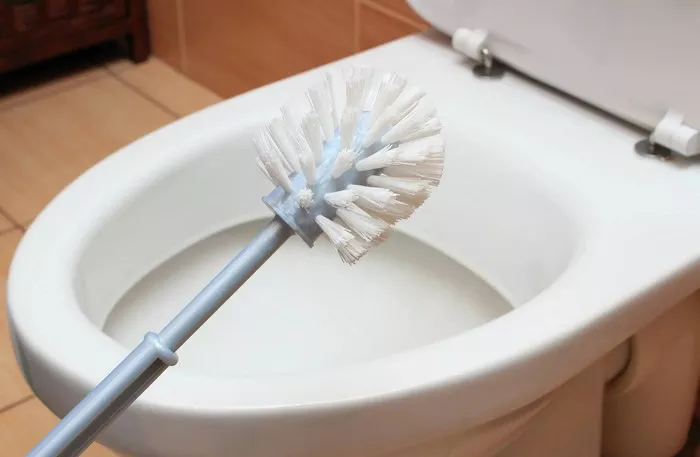Maintaining a clean and hygienic environment in your home is essential for the health and well-being of your family. While many areas of the home require regular cleaning, the toilet seat often stands out as a focal point for hygiene concerns. How frequently should you clean your toilet seat to ensure a clean and sanitary environment? Let’s delve into this topic to provide you with professional guidance on maintaining toilet seat cleanliness.
When it comes to the frequency of cleaning your toilet seat, several factors come into play, including usage, household size, and personal preferences. However, one universal truth remains: regular cleaning is vital for preventing the buildup of bacteria and germs that can lead to illness and unpleasant odors.
Understanding the Importance of Regular Cleaning
The toilet seat serves as a breeding ground for bacteria and germs, given its frequent contact with bodily fluids and waste. According to research published in the Journal of Applied Microbiology, toilets can harbor various microorganisms, including E. coli, streptococcus, and salmonella, which pose health risks if not adequately addressed.
Furthermore, when flushed, toilets can release microscopic water droplets containing bacteria into the air, a phenomenon known as the “toilet plume.” These droplets can settle on nearby surfaces, including the toilet seat, increasing the risk of contamination. Therefore, regular cleaning of the toilet seat is crucial for minimizing bacterial growth and maintaining a hygienic environment in your bathroom.
Determining Cleaning Frequency
While there is no one-size-fits-all answer to how often you should clean your toilet seat, several guidelines can help you determine an appropriate cleaning schedule:
1. Daily Cleaning: Wiping down the toilet seat with a disinfectant wipe or spray after each use can help remove surface bacteria and prevent the accumulation of germs. This practice is especially important in households with multiple occupants or higher bathroom traffic.
2. Weekly Cleaning: A more thorough cleaning of the toilet seat should be performed at least once a week. This involves using a toilet bowl cleaner or disinfectant spray to clean the entire surface of the seat, including the underside and hinges. Pay special attention to crevices where bacteria may accumulate.
3. Monthly Deep Cleaning: In addition to regular daily and weekly cleaning, it’s advisable to perform a deep cleaning of the toilet seat and surrounding areas once a month. This involves removing the seat (if detachable) and scrubbing it with a mixture of water and bleach or a commercial bathroom cleaner to eliminate stubborn stains and bacteria.
Tailoring Cleaning Practices to Household Needs
While the above guidelines provide a general framework for toilet seat cleaning, it’s essential to adapt your cleaning practices to suit your household’s specific needs:
4. Household Size: Larger households with more occupants may require more frequent cleaning to prevent the spread of germs and maintain hygiene standards.
5. Frequency of Use: High-traffic bathrooms, such as those in commercial settings or households with frequent guests, may necessitate more frequent cleaning to keep the toilet seat clean and sanitary.
6. Health Considerations: Individuals with compromised immune systems, elderly individuals, or those with underlying health conditions may benefit from more frequent and thorough cleaning to minimize the risk of infection.
Best Practices for Effective Cleaning
To ensure that your cleaning efforts are effective in maintaining toilet seat hygiene, consider the following best practices:
1. Use Disinfectant Products: Choose disinfectant wipes or sprays that are specifically formulated to kill germs and bacteria commonly found in bathrooms.
2. Follow Manufacturer’s Instructions: If your toilet seat is detachable, refer to the manufacturer’s instructions for proper removal and cleaning to avoid damage.
3. Wear Protective Gear: When cleaning the toilet seat, wear disposable gloves to protect your hands from contact with bacteria and cleaning chemicals.
4. Ventilate the Bathroom: Proper ventilation can help dissipate odors and reduce moisture, creating a less favorable environment for bacterial growth.
5. Regularly Replace Cleaning Tools: Replace cleaning brushes, sponges, and wipes regularly to prevent the transfer of bacteria and ensure optimal cleaning performance.
Conclusion
Maintaining a clean toilet seat is essential for promoting good hygiene and preventing the spread of illness-causing bacteria and germs. By following a regular cleaning schedule and implementing effective cleaning practices, you can create a clean and sanitary environment in your bathroom. Remember to tailor your cleaning routine to suit your household’s specific needs and prioritize thorough cleaning in high-traffic areas. By making toilet seat cleanliness a priority, you can contribute to the overall health and well-being of your family.
FAQs
Q1. How often should I clean my toilet seat if I live alone?
A1: If you live alone, cleaning your toilet seat once a week should suffice, provided that you maintain good bathroom hygiene habits. However, consider increasing the frequency if you have guests or if you notice any signs of buildup or odor.
Q2. Can I use natural cleaning products to clean my toilet seat?
A2: Yes, natural cleaning products such as vinegar or baking soda can be effective for cleaning and disinfecting your toilet seat. However, be sure to follow proper cleaning techniques and ensure thorough disinfection to eliminate harmful bacteria effectively.
Q3. Is it necessary to clean the underside of the toilet seat?
A3: Yes, it is essential to clean the underside of the toilet seat regularly, as it can harbor bacteria and germs that may come into contact with skin or clothing. Use a disinfectant spray or wipes to thoroughly clean both the top and underside of the seat during your cleaning routine.

